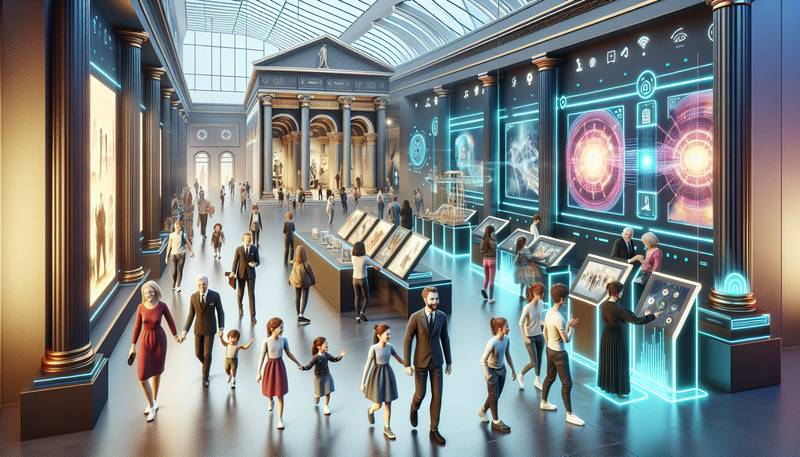Interactive Design in Museums: A New Era

A Shift in the Viewing ExperienceWhen you think of museums, the image of serene halls filled with ancient relics comes to mind. You can practically hear the hushed whispers of visitors marveling at a dusty old pot. But hold onto that thought—because it’s about to take a hip turn. In an age where smartphones reign supreme and attention spans are shorter than a cat's nap, museums have decided to ditch the dusty motif. Instead, they’re trading it for an exciting, interactive experience that invites exploration. Imagine stepping into a room where history comes alive, and—surprise—there's no need to keep your hands to yourself!Touch It and You Might Learn SomethingGone are the days when “Do Not Touch” signs dominated the landscape of museum displays. Now, interactive design allows us to poke, prod, and even swipe at exhibits. While it may be true that some exhibits might not appreciate your touch as much as others (we’re looking at you, fragile 5,000-year-old Egyptian sarcophagus), many interactive stations invite you to engage. This modern approach not only provides a hands-on learning experience but also draws in a crowd that might otherwise have asked, “Are we done yet?” just moments after entering.- Digital displays transform static artifacts into animated stories.
- Augmented reality apps allow you to interact with the past in eye-popping detail.
- Whimsical installations ensure that even the most serious of topics don’t feel like an episode of a dry documentary.
Learning Without the Brain FreezeStaring at paintings can feel a lot like contemplating a bowl of cold soup—satisfying for some, but somewhat lacking in flavor for others. Museums are transforming this experience by incorporating elements that make learning feel less like a school assignment and more like a scavenger hunt. There’s nothing quite like being guided by a quirky character in a video who tells you the history of a priceless artifact while making you giggle at the same time. It’s about blending education with fun, allowing visitors of all ages to engage, explore, and even get a little silly. If the message is historical relevance, why not convey that via an interactive game that invites you to “battle” famous historical figures? Board games are great, but nothing beats the thrill of colliding with Julius Caesar in an imaginary coliseum.The Tech TakeoverThis isn’t your grandfather’s museum anymore—unless, of course, he was really into holograms. Technology has woven itself into the very fabric of the interactive experience. Many museums are incorporating virtual reality headsets, allowing you to walk through the streets of ancient Rome or admire the vistas of Van Gogh’s masterpieces without risking a real-life trip to the Med.Imagine soaring over the Mona Lisa and contemplating whether she’s smiling at you or just amused by the latest fashion trends. The balance of technology and storytelling in museums today offers an imaginative escape that traditional exhibits can only aspire to.- Virtual reality lets you travel through time without the need for a DeLorean.
- Interactive kiosks encourage you to embark on a knowledge treasure hunt.
- Smartphone apps add fun layers to what once felt like a linear experience.
Appealing to All SensesIn an effort to make the experience truly immersive, modern museums are appealing to all the senses. Smells waft through the galleries to evoke memories or create atmospheres. Imagine catching a whiff of fresh bread while learning about ancient baking techniques! It’s like an unexpected whiff of grandma’s kitchen, except grandma doesn’t mind that you’re inside of a glass case.Interactive soundscapes can envelop you, immersing you in the time or place you’re learning about. It’s like being on a soundstage for a historical drama—without the overdramatic actors.Wrapping It Up: The Exhibit of Tomorrow AwaitsMuseums are transforming into vibrant spaces of discovery that cater to modern demands and whims with an extra dash of pizzazz. By embracing interactive design, they are creating environments where learning is playful, engaging, and, dare we say, a bit charming. So next time you stroll through a museum, look out for those interactive experiences. You might just find yourself participating in history in a way that would make even the stuffiest curator crack a smile. After all, history isn’t meant to be a snooze-fest—it’s a rollercoaster ride just waiting for an adventurous heart to hop on!
|
|







